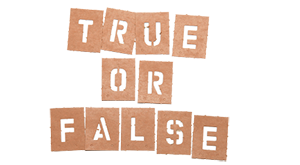Common Photography Misconceptions

There are many misconceptions regarding photography and photography equipment. We often hear questions like, “How many megapixels do I need?”, “Which brand is best?”, “Crop vs full frame?”, and “Digital vs film?”. Below are clear, practical answers based on how we actually shoot Los Angeles wedding photography—from bright mid-day sun to candle-lit receptions and everything in between.
Don’t Get Caught up in Megapixel Marketing
Megapixels don’t equal image quality—the number mostly determines maximum native print size. Sensor performance, glass quality, light, and technique matter far more than raw pixel count. For most weddings, 20–30MP comfortably covers albums, wall art, and social delivery without compromise.
Real-world example from LA weddings: a well-timed, beautifully lit 24MP image will look better than a poorly lit 60MP file. Good light and true moments are what make photographs memorable—megapixels are just math.
Full Frame vs. Crop Frame Sensors

Full frame bodies generally offer cleaner files and better low-light performance. That helps in dim churches, ballrooms, and night portraits across Los Angeles. Crop-sensor cameras can still produce amazing results—the photographer’s timing and control of light matter most.
Our typical wedding kit pairs a full-frame primary body for the ceremony and reception with a second body as backup/alternate angle. The key is reliability, fast autofocus, and lenses you trust—not the sensor label.
“…it depends more on the photographer and their technique than the camera itself. There are many amazing professionals shooting on crop-sensor bodies.”
— Emil Gasparian
Large RAW vs. Small RAW
Larger RAW files don’t magically improve quality; they increase storage, slow culling, and can exaggerate noise at high ISOs. We choose the RAW size that fits the job and lighting. For fast-moving Los Angeles wedding photography, a balanced RAW size speeds delivery while preserving the latitude needed for clean edits.
Think output first: if the images are destined for albums, prints up to 20×30, and online galleries, a moderate RAW size plus solid exposure will outperform a bloated file that slows you down.
Canon vs Nikon vs Sony vs Fuji

All four ecosystems are capable of beautiful work. Differences show up in ergonomics, autofocus behavior, lens selection, color science, and features like silent/electronic shutters or in-body stabilization. For LA weddings, we prioritize accurate skin tones, reliable eye-AF for fast candids, quiet operation during ceremonies, and lenses that perform in harsh sun and low light.
The truth: couples don’t hire a brand, they hire results. Choose the system you handle confidently for 10+ hours straight, with lenses you love and support you trust. That confidence is what translates to better wedding images.
Digital vs. Film
Film has a timeless look, but modern digital wins for flexibility, speed, and consistency—especially when a schedule shifts or LA traffic compresses timelines. Today’s “digital darkroom” mirrors classic techniques like dodging and burning, with the advantage of instant review and efficient, color-accurate workflows.
We often emulate film tones where it serves the story, but the priority remains truthful color and elegant skin rendition across an entire wedding gallery.
Planning a wedding in Los Angeles? If you value honest, story-driven coverage and beautiful portraits in any light, we’d love to help.
If you’d like to see how these choices play out in real galleries—bright outdoor ceremonies in Pasadena, sunset portraits in Malibu, or candle-lit receptions in DTLA—reach out and we’ll share full weddings. That’s the best way to judge Los Angeles wedding photography: by complete stories, not specs.











